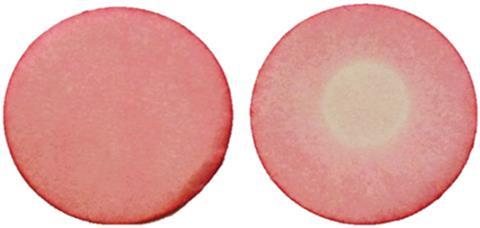UN inspectors seeking evidence of a chemical weapons attack in Syria have now left the country. As the world awaits their official findings, scientists in France and the Czech Republic report a new complex that could be used to develop simpler and more sensitive detection devices for the nerve agent, sarin.
Sarin’s use as a deadly weapon include a terrorist attack on Tokoyo’s subway in 1995 and an attack by Iraqi government forces on the town of Halabja in Southern Kurdistan in 1988. It is highly toxic, affecting muscle function, and at high doses it causes death by asphyxiation.
Current detection methods are expensive and have low selectivity, or require complex equipment that is not portable. Sensors based on chemicals that visually respond to sarin would be very simple for untrained first responders to use at the site of an attack. Now, Alexandre Carella and colleagues at the French Laboratory of Innovation for New Energy Technologies and Nanomaterials and the University of Defence in the Czech Republic have designed a bipyridine ligand that changes colour on contact with sarin.
When the bipyridine ligand is coordinated to iron, electronic transitions give rise to a red colour. Reaction with an organophosphorus compound such as sarin alters the ligand's structure, preventing it from being able to bind to iron. This prevents the electronic transitions so the colour vanishes.

Timothy Swager, a chemosensors expert at the Massachusetts Institute of Technology in Cambridge, US, says decomplexing a chromophore from a metal center to produce a colour change is an innovative idea. ‘Monitoring the fluorescence of the liberated chromophores has the prospect to create a highly sensitive sensor.’
The team are now trying to adapt the structure of the ligand to optimise its sensitivity towards sarin and develop chromogenic papers that are sensitive and selective to sarin vapour.







No comments yet